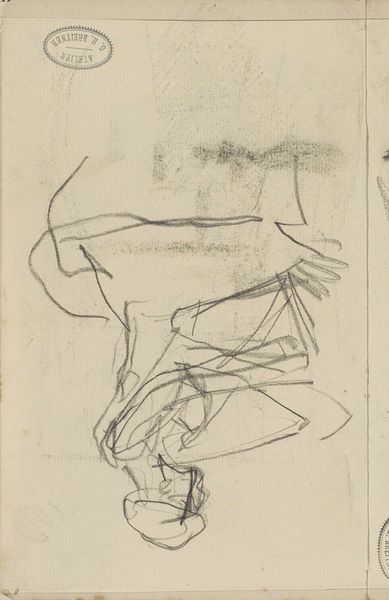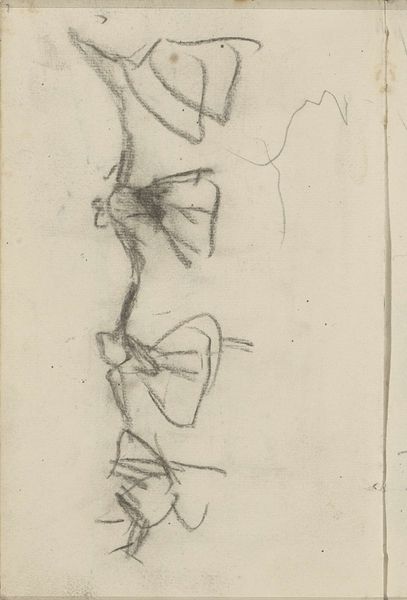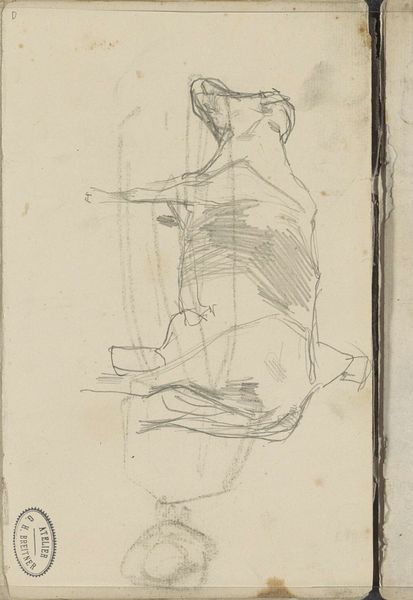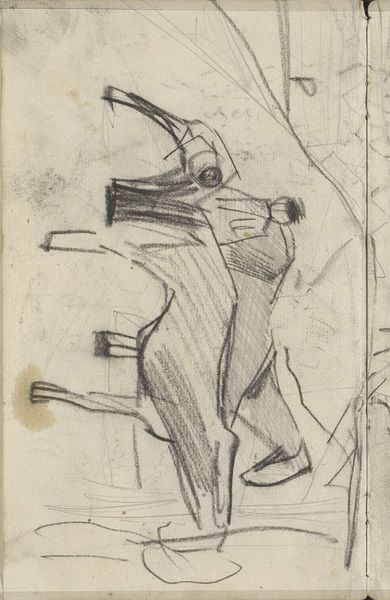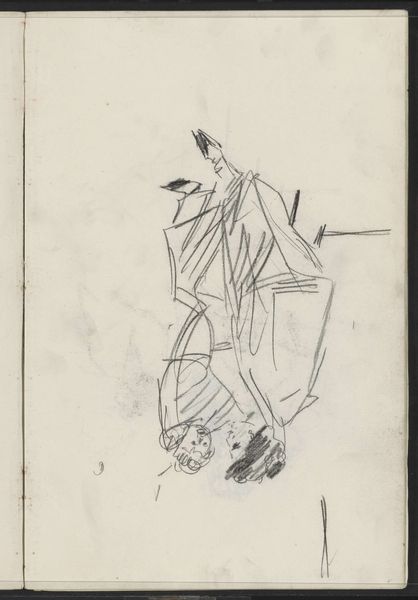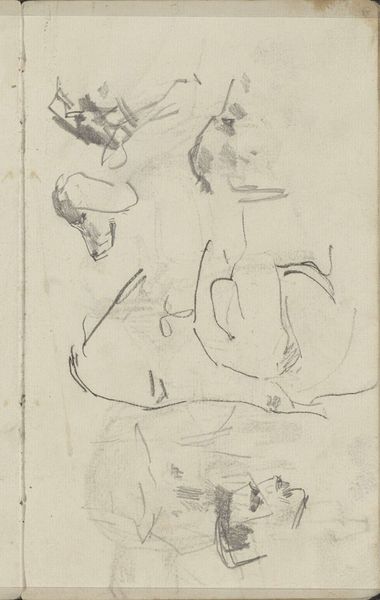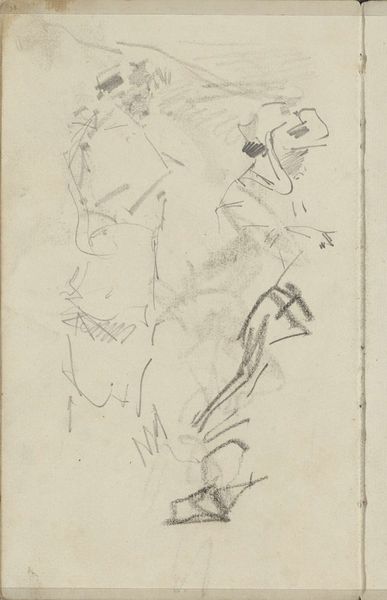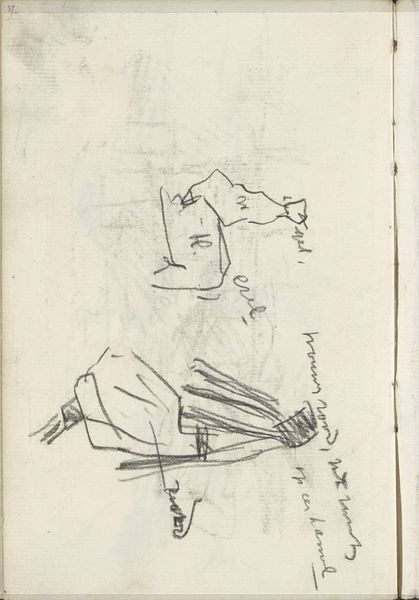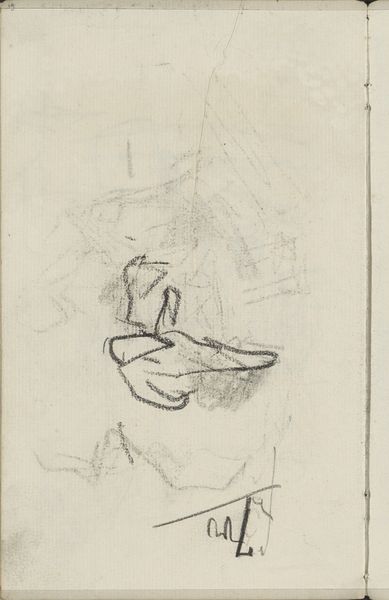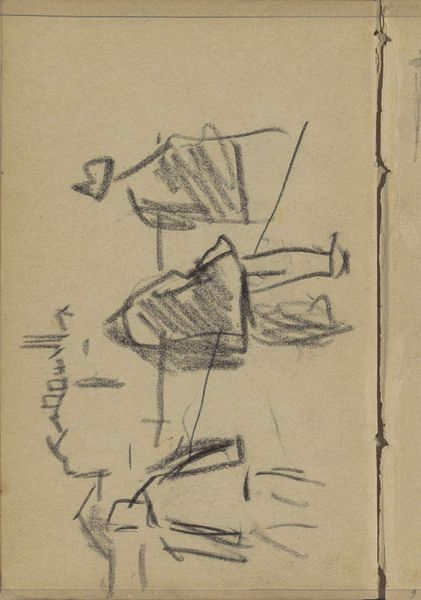
drawing, pencil, graphite
#
drawing
#
amateur sketch
#
light pencil work
#
pencil sketch
#
incomplete sketchy
#
figuration
#
personal sketchbook
#
idea generation sketch
#
ink drawing experimentation
#
pen-ink sketch
#
pencil
#
line
#
graphite
#
sketchbook drawing
#
sketchbook art
#
realism
Copyright: Rijks Museum: Open Domain
Curator: What a fascinating collection of marks. It seems incredibly immediate and spontaneous. Editor: Indeed. We're looking at a page of "Studies" by George Hendrik Breitner, likely dating from the early 1880s, here at the Rijksmuseum. The medium is simple: primarily pencil and graphite on paper. It gives us insight into his working methods. Curator: Absolutely, a raw, utilitarian approach. This isn't about high-flown aesthetics. Look at the quick strokes; this is about the act of seeing and translating that to paper. It speaks of an industrialized approach to artmaking, very attuned to depicting modern life. Editor: And what kind of "modern life" do you see hinted at here? I am intrigued by how social conditions of the time might have been a context for these drawings. Breitner became known for his gritty depictions of Amsterdam. Does this connect? Curator: Well, it's difficult to decipher the exact subject from these gestural lines alone, but the shapes evoke the human form and the activity surrounding its rendering—the act of drawing itself. Editor: It reminds us how the elite studios often relied on quick sketches made affordable, accessible and instructional to a broadening public during his time. Curator: That makes perfect sense in regards to its function. What interests me is Breitner's process, his labor. Where did he get the materials? Who made the paper? These aspects frame the experience of the art. Editor: Breitner, a man trained at the academy who embraced photography while recording impressions of life, would ultimately elevate those 'raw materials' of the world into a refined artistic project within accepted salons and institutions. Curator: The fact that this sketchbook is preserved within an institution also underscores the changing role of the artist during this period. Artists once had to be secretive in developing an idea before its grand reveal. This allows us to access the normally obscured labor. Editor: Yes, the institutional choice to showcase process raises key issues around creativity, production, value, and consumption—of both materials and images in our broader culture. I will not view sketches in quite the same way after our chat. Curator: Precisely, it alters how we consider all forms of material engagement in art and life! It's rewarding to think of such rough, ready things influencing our notions of what deserves display.
Comments
No comments
Be the first to comment and join the conversation on the ultimate creative platform.

